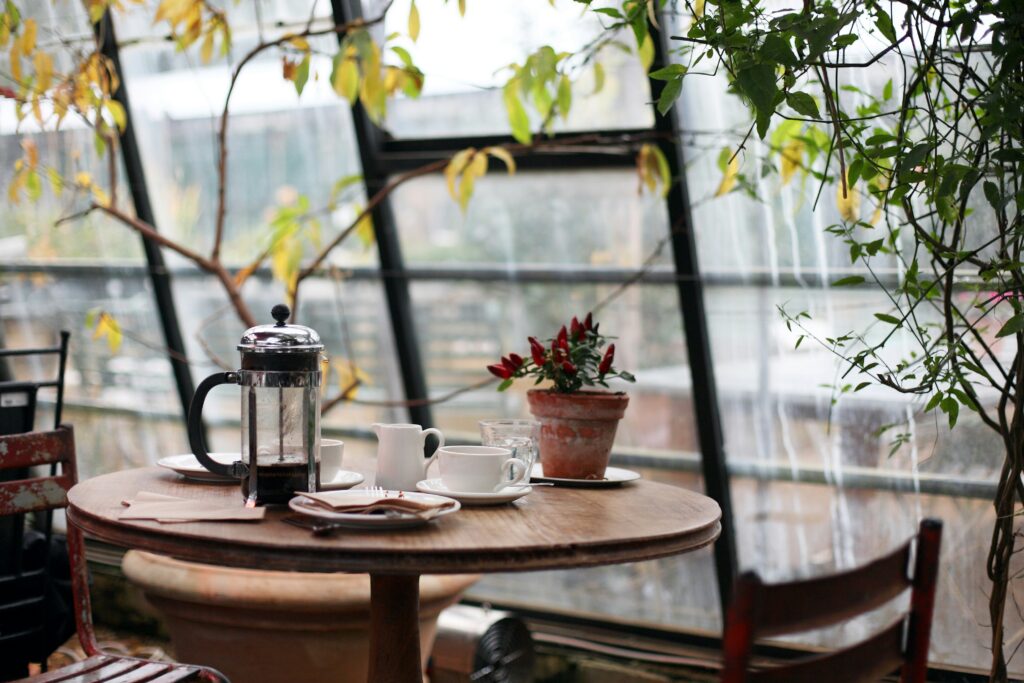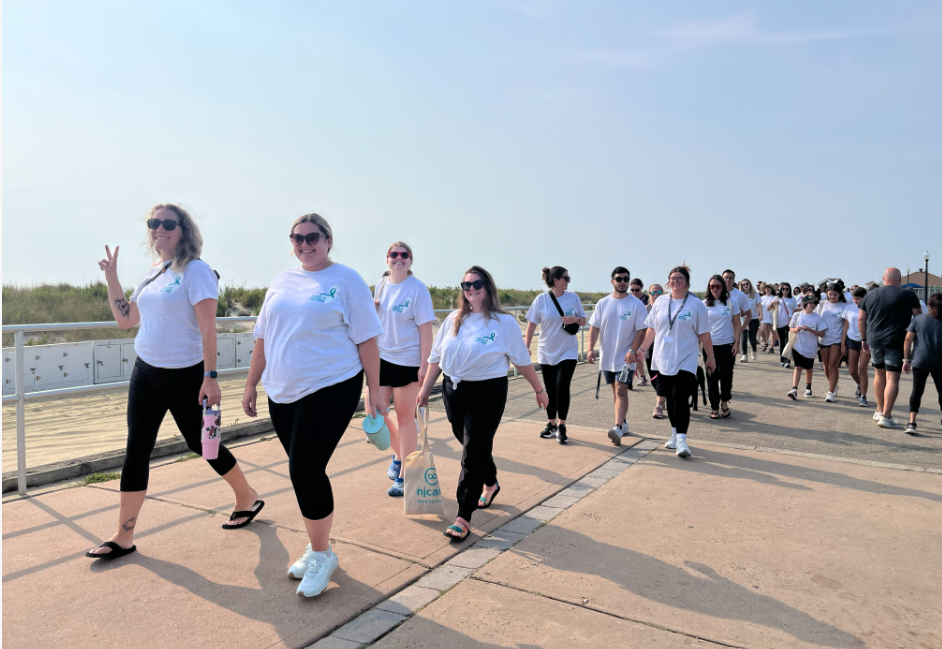There have always been places where people gather to make sense of the world together — not the grand halls or gated institutions, but the smaller rooms, like the barber shop humming on a Friday night, the corner café, the open mic tucked between shelves of books and steaming cups of tea. These are what sociologists call third spaces, i.e., the places that live between home and work, where community breathes freely, where ideas ferment, where laughter and resistance share the same table.
Across generations, third spaces have been the beating heart of social change. Think of cafés in Paris, where visionaries and changemakers shared ideas between sips of coffee, or the Harlem rent parties and church basements, where jazz and freedom grew up together, or dancehall parties in Jamaica, where those pushed to the margins banded together around unifying anthems of celebration and freedom. Think of the street corners where griots told stories that carried whole histories inside them. Every people, everywhere, has had its gathering place, where truth could be spoken and imagination could stretch its legs.
It’s in that spirit that the New Jersey Coalition Against Sexual Assault’s (NJCASA’s) community-level prevention project became curious about how we could reconnect to these spaces and center them as sites of community-building and healing. What if the café, the bookstore, the rec center, the library, the community center, the beauty salon, etc. could be reimagined as places where we interrupt and prevent harm not through punishment but through poetry? How could we revive the third spaces in our communities to facilitate conversations about gender, power, and respect that carry the “good vibes” of music and not the formality of lectures?
One way to do so is to seek inspiration from successful examples found around the world. In Somalia, for example, poetry cafés emerged as a transformative model for violence prevention, reviving a centuries-old oral tradition of gabay and buraanbur to counter extremist recruitment and rebuild civic trust. Through programs supported by United Nations Development Programme (UNDP) and Interpeace between 2014 and 2020, more than 2,000 youth participants across Mogadishu, Puntland, and Hargeisa attended community poetry cafés and storytelling events that used art to open dialogue around trauma, identity, and belonging (UNDP; Interpeace). Evaluations conducted by implementing partners noted a 35% increase in youth-reported willingness to engage in cross-clan dialogue and a 20% reduction in self-reported support for violent or exclusionary narratives within six months of participation (United States Institute of Peace [USIP]). Local peace monitors also observed tangible behavioral shifts, including a decline in youth-led street altercations and increased collaboration between artists and civic leaders in community mediation efforts. Beyond quantitative gains, participants described the cafés as “safe houses of the spirit,” where performance became a vehicle for self-expression, healing, and collective accountability (International Organization for Migration [IOM]). The Somalia Poetry Café model demonstrates that low-cost, culturally grounded initiatives can measurably strengthen social cohesion and reduce the risk factors associated with violence, proof that art and prevention can occupy the same stage.
NJCASA began to wonder what a Somali-style poetry café would look like in Newark, Camden, Trenton, Atlantic City, Cape May, Mahwah, or Bridgeton. These spaces are already alive with art and conversation. With a little intention, they can become even more. They can become sanctuaries for dialogue, performance, and prevention.
To café owners, bookstore curators, librarians, barbers, and community builders, this message is for you. You are already the keepers of our modern-day gathering places, the stewards of belonging. Within your walls, people meet, argue, laugh, write, flirt, and dream. That energy is sacred. It’s the raw material of culture itself.
You might not call what you do “prevention,” but you are already creating the conditions where connection thrives and harm loses its grip. You are building community, one conversation, one cup, one gathering at a time. If you’ve ever thought, “I want to host something meaningful here, but I don’t know where to start,” this section is your guide.
Step 1: Develop a Theme That Speaks to Your Community
Start with a message that feels true to the people around you. It doesn’t need to be academic or heavy-handed; it just needs to spark curiosity and reflection. Choose something that feels like a bridge and invites participation. If you’re a librarian or café owner, invite local poets, musicians, and students to help shape the theme. People support what they help build.
Ideas for themes:
- “The Love and Respect Slam”
- “What Does Safety Sound Like?”
- “Poems for Prevention, Songs for Healing”
- “The Culture of Care Café”
Step 2: Get Buy-In From Your Space
For café or bookstore owners:
You already know your crowd. Think of this event as both an offering to your community and good for business. An open mic night brings new faces, fills seats, and creates repeat customers. You can start by hosting one event at a cadence that is sustainable to you (monthly, bi-monthly, quarterly) –low cost, low lift, high impact.
For community members approaching a local business:
Come with clarity and enthusiasm and offer something in return, like social media promotion or co-branding. Make it mutually beneficial.
Tips for approaching local businesses:
- Be specific about timing and expected attendance.
- Offer to handle promotion and logistics.
- If there’s a rental fee, ask whether it can be waived or offset with sponsorships or sliding-scale donations.
- Ask about quieter nights (weeknights, late afternoons) when they’d appreciate foot traffic.
Most small business owners care deeply about their communities; they just need to be able to trust you and believe that your model is sustainable and well-thought-out.
Step 3: Build Partnerships and Gather a Team
You don’t need a full nonprofit to make this happen — just a few committed people.
Reach out to:
- Local youth organizations, sexual violence service providers (check out member program(s) in your county here), or colleges across the state.
- Artists and open mic hosts already rooted in the scene.
- Community groups, faith leaders, or even barber shops that can help spread the word.
If possible, include young people in planning and hosting. Give them real decision-making power and pay or publicly recognize their labor (e.g., stipend, gift card, free book, certificate, letter of recognition).
Step 4: Spread the Word
Marketing is about energy and repetition, not perfection.
Here’s how to get the word out:
- Social Media: Post flyers on Instagram, Facebook, and community pages. Tag your performers and venue.
- Offline: Drop posters at libraries, universities, youth centers, and community boards.
- Word of Mouth: Encourage each participant to invite a set number of people and have a prize for the person who invites the biggest crew.
- Local Press: Reach out to small local news outlets or newsletters. Many love to cover positive community events.
- Partnerships: Ask the café or library to post the event on their website or social channels; the co-sign matters.
- Resource Sharing: Ask relevant community partners to share factsheets and other resources you can have at the event. This way, you are expanding awareness and impact.
The poet June Jordan once said, “We are the ones we have been waiting for.” That’s the spirit of this work. It’s not about waiting for systems to fix what they broke. It’s about creating something new in the spaces we already have. When we fill our cafés with poetry and purpose, we do more than prevent violence — we nurture imagination, connection, and care. We teach by living. We protect by creating. And we pass the torch from one generation to the next. This is how we build a safer world. Not by waiting, but by gathering.
Works Cited
Interpeace. Women, Poetry, Video: The Success of an Inventive Peacebuilding Tool in Puntland. Interpeace, 2012, https://www.interpeace.org/2012/09/women-poetry-video-the-success-of-an-inventive-peacebuilding-tool-in-puntland.
International Organization for Migration (IOM). Poetry Connecting People in Somalia. IOM Somalia, 2020, https://www.iom.int/sites/g/files/tmzbdl486/files/mhpss/annex/poetry_project_booklet_2020-_iom_somalia.pdf.
Moolla, F. Fiona. “Orality and Cultural Identity in Somali Poetry.” Comparative Literature Studies, vol. 49, no. 3, 2012, pp. 434–459.
United Nations Development Programme (UNDP). A Nation of Poets: Somalia’s Storytellers Reclaim Narrative for Peace. UNDP Somalia, 2018, https://www.undp.org/somalia/stories/nation-poets.
United States Institute of Peace (USIP). “Music, Poetry, and Film: Shoring Identities to Peaceful Ends.” USIP Publications, Oct. 2015, https://www.usip.org/publications/2015/10/music-poetry-film-shoring-identities-peaceful-ends.






